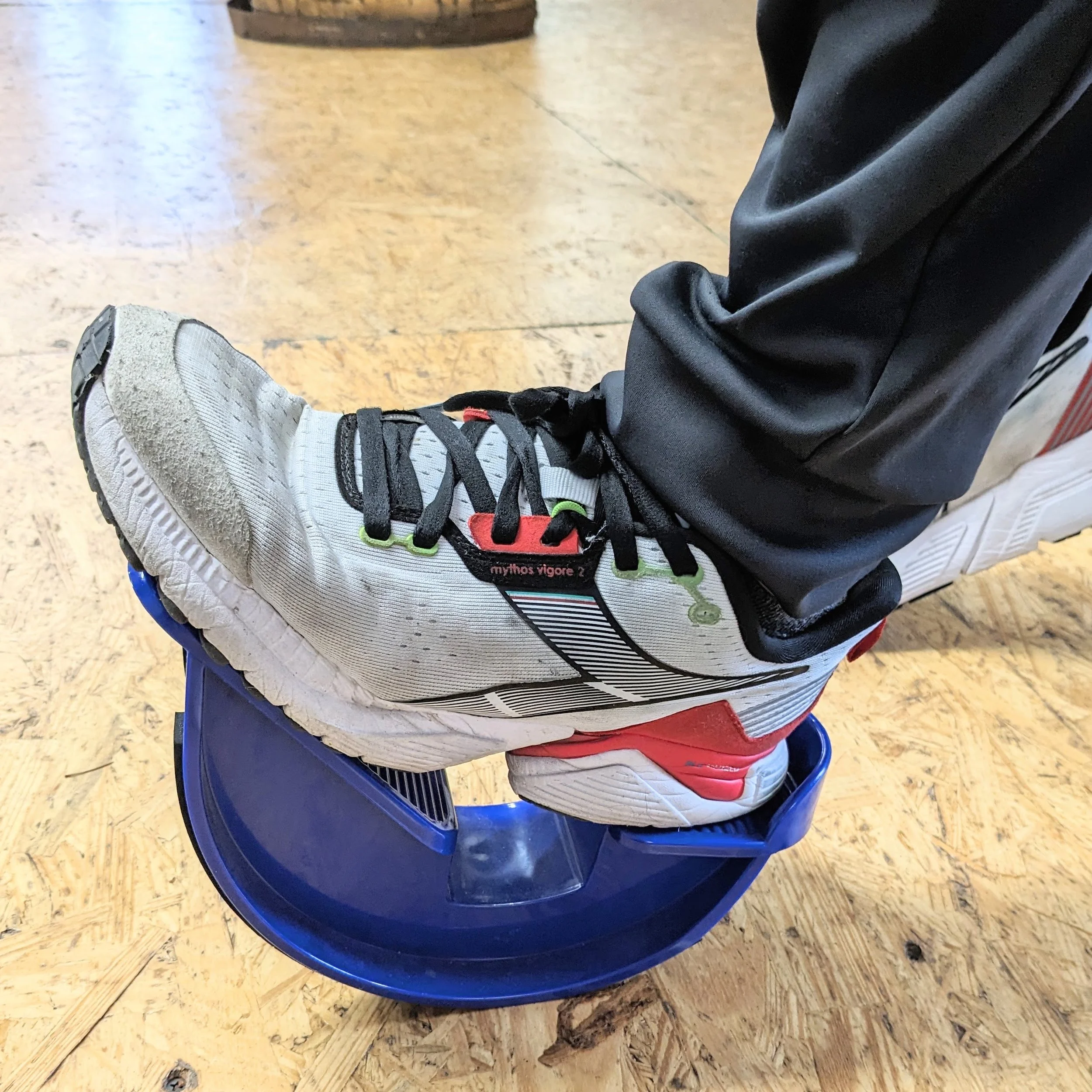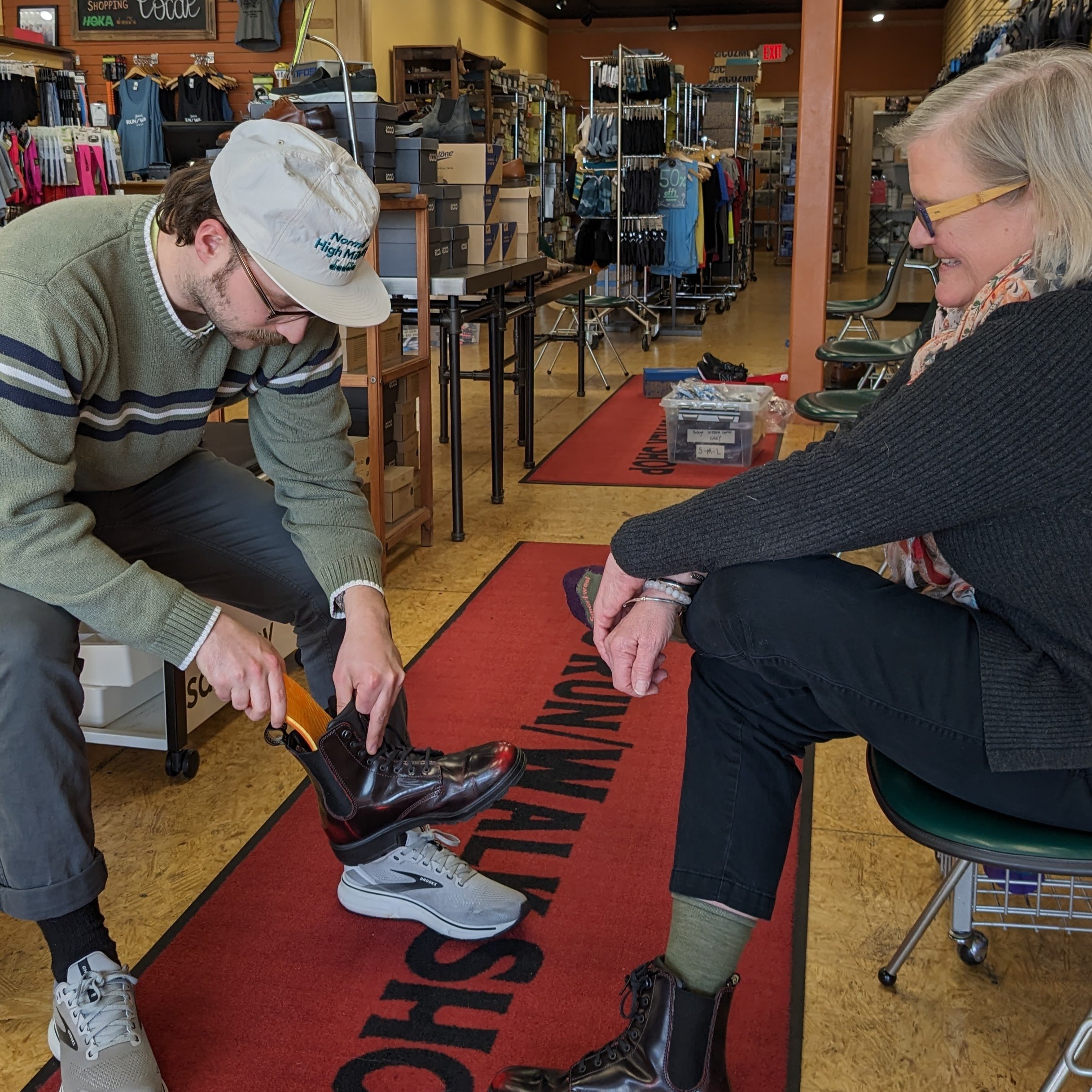Understanding Your Arches
Be Kind to Your Arches & Avoid Foot Pain
Many people focus on style and comfort when choosing a new pair of shoes. Sure, those are important. But don’t overlook arch support.
The arches of our feet play a crucial role in maintaining balance, absorbing shock, and supporting our body weight. In this post, we'll dive into the significance of arch support, the various types of foot arches, potential issues caused by inadequate support, and effective ways to alleviate pain associated with arch-related problems.
Why Is Arch Support Important?
Insufficient arch support in footwear can cause a range of foot health issues. One prevalent concern is Plantar Fasciitis, marked by inflammation in the band of tissue linking the heel bone to the toes. This condition is common among individuals with either flat feet or high arches, both of which are prone to discomfort when lacking the necessary support.
Another potential problem is shin splints, characterized by pain along the inner edge of the shinbone. This discomfort is often a consequence of overpronation, a condition exacerbated by inadequate arch support.
Additionally, Achilles Tendonitis, involving inflammation of the Achilles tendon, can arise with insufficient foot support. The risk of overstretching is heightened in individuals with flat feet, while those with high arches may encounter tightness in the Achilles tendon.
Recognizing these issues underscores the importance of prioritizing proper arch support in your footwear choices to maintain optimal foot health and prevent associated discomfort.
How Do I Determine My Arch Type?
Knowing your arch type will help you select the right footwear for optimal comfort and support. One simple, at-home method to identify your arch type is the wet footprint test. Wet the sole of your foot and step onto a surface that will clearly show your footprint, such as a piece of paper or cardboard.
If you see a well-defined curve along the inside of your foot with a narrower connection between the heel and the ball of the foot, you likely have a normal arch. Flat feet will leave a footprint with a more substantial contact area, while high arches are characterized by a thin, curved imprint with minimal contact on the ground.
And of course, consulting with a podiatrist or getting fitted at John’s Run/Walk Shop can provide a professional assessment of your arch type, helping you make informed choices when it comes to choosing supportive shoes.
Types of Foot Arches:
Neutral (Standard) Arch:
Ankle and foot align or roll slightly inward
Footprint shows some arch
Shoe soles tend to wear at the center of the foot
Low Arches & Flat Feet:
Ankle and foot roll inward (pronate)
Footprint shows that most of the arch touches the ground
Shoe soles tend to wear on the inner edge
Low arch feet are more flexible and need more stability
High Arches:
Ankle and foot roll outward (supinate)
Footprint shows arch raised from the ground with the ball of foot and heel connected by a thin line
Shoe soles tend to wear on the outer edge
High arch feet are less flexible/more rigid and need more cushioning
How Can I Treat Foot Arch-Related Pain?
Orthotic Inserts:
Pairing a supportive show with the proper PowerStep inserts can provide additional arch support. John’s Run/Walk Shop carries a variety of PowerStep and Currex insoles designed to help with a range of foot-related issues such as Plantar fasciitis or metatarsalgia.
Proper Footwear
Visit John’s Run/Walk Shop to be fitted by one of our fit experts. We have a variety of shoes, in both our running and comfort lines, that offer substantial arch support.
Stretching Exercises:
Calf stretches, toe curls, and towel stretches can improve flexibility and reduce tension. For proper stretching assistance, we recommend using PowerStep’s UltraFlexx® Foot Rocker. This device provides a deep stretch to boost your flexibility, prevent and treat injuries, and relieve common heel, foot, calf, and leg pain.
Icing and Rest:
Apply ice to reduce inflammation and give your feet ample time to rest.
Professional Intervention:
Consult a podiatrist for personalized advice and treatment options, including physical therapy.
The role of arch support in your choice of footwear is crucial. By understanding your foot arch type and investing in shoes and insoles that provide adequate support, you not only enhance your comfort but also reduce the risk of developing arch-related conditions.
Take proactive steps to care for your feet, and you'll be on your way to moving through life pain-free.
Disclaimer: The information provided in this blog post is for general informational purposes only and is not intended as medical advice. Our recommendations should not be used as a substitute for professional medical diagnosis or treatment. If you are experiencing foot-related issues or any health concerns, we strongly encourage you to consult a qualified healthcare professional.



